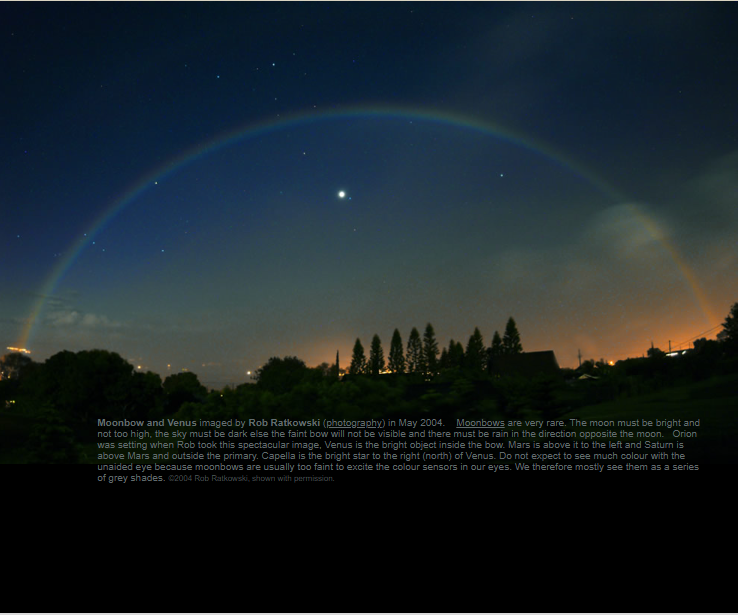Moonbow - Maui, Hawaii
Moonbow - A Rare and Enchanting Phenomenon in Maui, Hawaii
Maui, Hawaii, known for its stunning landscapes and breathtaking natural wonders, is also home to a rare and enchanting atmospheric optics phenomenon known as the moonbow. While rainbows are a familiar sight to many, moonbows are much rarer and hold a certain mystique that captivates those lucky enough to witness them.
What is a Moonbow?
A moonbow is essentially a rainbow that occurs at night, created by the reflection, refraction, and dispersion of light through water droplets in the air. Just like rainbows, moonbows form when light interacts with water particles, but instead of sunlight, they are formed by the light of the moon. These ethereal spectacles typically appear as faint, white or colorless arcs in the night sky, often accompanied by a sense of wonder and awe.
The Perfect Conditions for a Moonbow
Several factors must align perfectly for a moonbow to manifest itself in all its glory. Firstly, the moon must be bright and not too high in the sky. A lower moon position allows for a greater angle of light to interact with the raindrops, enhancing the visibility of the moonbow. Secondly, the sky must be dark enough to contrast with the faintness of the moonbow. In areas with excessive light pollution, it may be challenging to spot these elusive phenomena.
Additionally, there must be rain falling in the direction opposite the moon. The raindrops act as tiny prisms that refract and disperse the moonlight, creating the beautiful arc of the moonbow. The intensity of the rain can affect the visibility of the moonbow, with heavier rainfall producing more pronounced and vibrant colors.
The Elusive Colors of Moonbows
Unlike their daytime counterparts, moonbows are usually too faint to excite the color sensors in our eyes, resulting in a predominantly gray appearance. However, under certain conditions, the human eye may perceive subtle hues in a moonbow. The colors are typically pastel and less vibrant than those of a traditional rainbow. Some lucky observers have reported seeing delicate shades of pink, blue, or even green in particularly vivid moonbows.
Photographing the Moonbow
Capturing the ephemeral beauty of a moonbow can be a challenging yet rewarding endeavor for photographers. Long-exposure techniques are often employed to capture the faint light and delicate colors of the moonbow against the dark night sky. By adjusting exposure settings and utilizing specialized equipment, photographers can create stunning images that showcase the elusive charm of these nocturnal rainbows.
Moonbow Viewing Locations in Maui
Maui offers several prime locations for moonbow viewing, where the necessary elements for this phenomenon are more likely to align. Haleakalā National Park, known for its breathtaking sunrises and sunsets, also provides an excellent vantage point for observing moonbows. The park's high elevation and relatively low light pollution contribute to optimal viewing conditions.
Waiʻānapanapa State Park, located along Maui's rugged coastline, is another popular spot for moonbow sightings. Its lush vegetation, black sand beach, and proximity to the ocean make it a picturesque setting for experiencing the magic of a moonbow.
The Celestial Dance of Planets and Moonbows
On rare occasions, celestial bodies such as planets can add an extra touch of wonder to a moonbow sighting. In the case of Maui's moonbows, Venus has been known to make appearances within the arc, creating a truly mesmerizing spectacle. Other planets, such as Mars and Saturn, may also grace the sky above the moonbow, further enhancing the celestial dance taking place overhead.
Embracing the Magic of Moonbows
Witnessing a moonbow in person is an awe-inspiring experience that connects us to the wonders of the natural world. The rarity and fleeting nature of these nocturnal rainbows make each sighting a cherished memory. Whether you're a photography enthusiast or simply an admirer of Earth's atmospheric marvels, a moonbow sighting in Maui, Hawaii is a testament to the beauty and enchantment that can be found in the night sky.
So, if you find yourself on the beautiful island of Maui during the right conditions, keep an eye out for this elusive phenomenon. With a little luck and a touch of magic, you may be one of the fortunate few to witness the ethereal glow of a moonbow illuminating the Hawaiian night.

Moonbow and Venus imaged by Rob Ratkowski (photography) in May 2004. Moonbows are very rare. The moon must be bright and not too high, the sky must be dark else the faint bow will not be visible and there must be rain in the direction opposite the moon. Orion was setting when Rob took this spectacular image, Venus is the bright object inside the bow. Mars is above it to the left and Saturn is above Mars and outside the primary. Capella is the bright star to the right (north) of Venus. Do not expect to see much colour with the unaided eye because moonbows are usually too faint to excite the colour sensors in our eyes. We therefore mostly see them as a series of grey shades. ©2004 Rob Ratkowski, shown with permission.
Note: this article has been automatically converted from the old site and may not appear as intended. You can find the original article here.
Reference Atmospheric Optics
If you use any of the definitions, information, or data presented on Atmospheric Optics, please copy the link or reference below to properly credit us as the reference source. Thank you!
-
<a href="https://atoptics.co.uk/blog/moonbow-maui-hawaii/">Moonbow - Maui, Hawaii</a>
-
"Moonbow - Maui, Hawaii". Atmospheric Optics. Accessed on December 22, 2024. https://atoptics.co.uk/blog/moonbow-maui-hawaii/.
-
"Moonbow - Maui, Hawaii". Atmospheric Optics, https://atoptics.co.uk/blog/moonbow-maui-hawaii/. Accessed 22 December, 2024
-
Moonbow - Maui, Hawaii. Atmospheric Optics. Retrieved from https://atoptics.co.uk/blog/moonbow-maui-hawaii/.